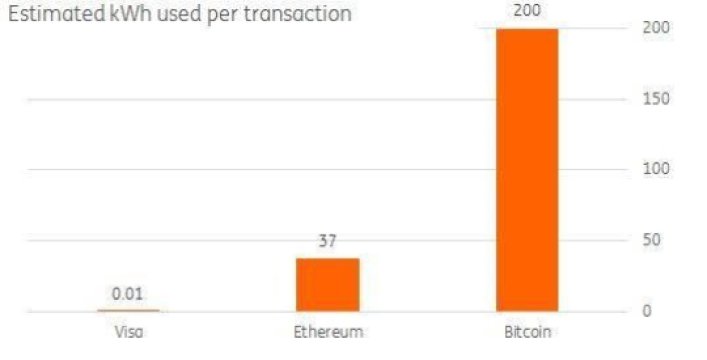The trouble with Bitcoin -- Blockchain and life on earth
We’ve all read about Bitcoin. Blockchain transactions such as those used by Bitcoin are touted for their security – the term “Blockchain” refers to a chain of “blocks” of data designed to be tamper-proof, partly because each block is identified by a “hash” which is like a digital fingerprint; it’s unique, and if anything within the block of data changes, so does the hash. And partly because their distribution among many different people makes it nearly impossible for a tamperer to access them all to change anything.
No wonder this “digital ledger” technology is becoming increasingly popular as a way to secure data.
And that’s a huge problem.
It’s a huge problem because the verification process is complex and uses such enormous amounts of power that failing to reduce the energy demands of Bitcoin and similar Blockchain applications may prevent nations from meeting their obligations to mitigate climate change.
According to a study by Jon Truby, Ph.D., of the College of Law at Qatar University, a single Bitcoin transaction made for private profit “could provide electricity to a British home for a month,” but the environmental costs are borne by the general public. About digital currency mining, he states, “Its transactions alone consume more electricity than entire nations.”
Here’s a statement from the abstract of his study: “The vast transactional, trust and security advantages of Bitcoin are dwarfed by the intentionally resource-intensive design in its transaction verification process which now threatens the climate we depend upon for survival.” [Ed.: emphasis added.]
Dr. Truby encourages development of less-energy-intensive Blockchain technology, and suggests imposing new taxes, fees, or restrictions to reduce demand by users who rely on polluting technologies, and offering incentives to encourage creation of carbon-neutral Blockchain.
Dr. Truby notes that many developers have not considered the energy hunger of their designs, and its environmental impacts. He wants that to change. “Taking no action means we are subsidizing high energy-consuming technology and causing future Blockchain developers to follow the same harmful path.”
Though someone may pay for the power consumed, that isn’t the whole story; we all pay for the impacts of accelerating climate change and their immense costs – worse droughts, more and bigger forest fires, intense downpours and floods, rising sea levels, reduced agricultural production and rising food costs, rising insurance premiums and so on.
The energy use of current Blockchain technology is, Dr. Truby suggests, “disproportionate to the economic or social benefits.” But he acknowledges the benefits, and looks forward to seeing the environmental costs reduced, and paid by those who profit.
He specifically recommends imposing registration fees to be collected by brokers from digital coin buyers; a “Bitcoin Sin Tax” surcharge on digital currency ownership; taxes and restrictions on purchases and imports of machinery designed for Bitcoin mining; and smart contract transaction charges.
Dr. Truby is well-placed to be aware of the effects of energy consumption on climate change: Qatar boasts the fourth-highest green-house gas emissions per capita in the world and is listed as the second-highest user of energy in the world, per capita, by Oilprice.com. Iceland is the highest energy user per capita in the world, but with most of its energy coming from hydroelectric and geothermal, its emissions are quite low.
As for Canada, we’re listed as the eighth-highest user of energy, per capita. And we emit 14.7 tonnes of carbon per capita each year. (Icelanders emit less than half of that: 6.13 tonnes per year.)
Locally, the need to have sufficient energy available for new additions to Metal Tech Alley should spur interest by local tech designers in creating more sustainable, less power-hungry Blockchain models. Why shouldn’t our area become even more cutting-edge?























